Like the famed yellow brick road, NYC’s High Line, and the Appalachian Trail’s Pochuck Boardwalk, pathways are routes that beckon others to follow, as they journey to a specific destination.
Forge a welcoming trail of your own, and improve your curb appeal while you’re at it, by leading visitors to your entryway, ushering them from your concrete patio to your side yard gazebo, or guiding them along a curved path that winds through your garden.
Not sure how to get started? We’ve compiled a list of 10 DIY walkway design ideas to give you all the inspiration you need.
But First: What Can You Use to Make a New Walkway?
There’s a whole host of walkway materials to choose from. When selecting one for your new path, keep in mind your current aesthetics, and pick a finish that will flow seamlessly into your landscaping. A few ideas:
- Pavers
- Natural stone
- Wooden pallets
- Brick
- Pea gravel
- Landscape timbers
- River rock
10 Walkway Ideas for Your Yard
1. Place stepping stones
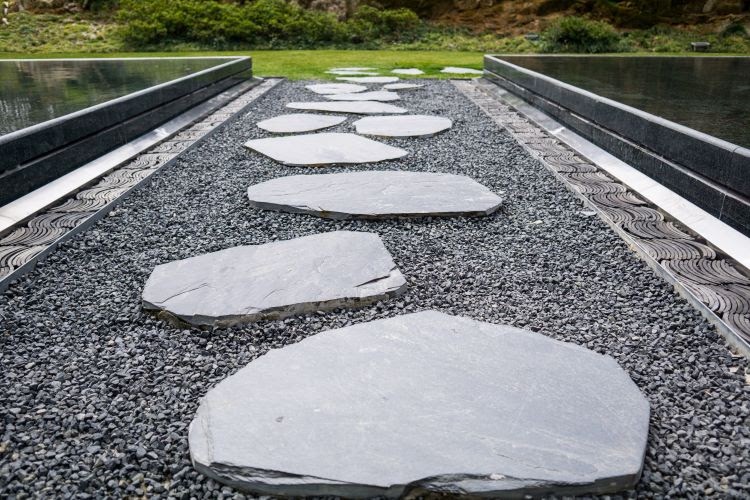
One of the easiest ways to DIY walkway construction is to use pre-cut stepping stones. After choosing an area for your new path, say leading up to your front door, lay the preliminary course by arranging the stones in the way you like.
Stepping stones come in an array of materials, styles, colors, and shapes. Below are just a few examples:
- Concrete, flagstone, bluestone
- Patterned or solid surfaces
- Tan, blue, or blended colors
- Square, round, or irregularly shaped
Effort: The DIYer in this tutorial recommends using a patio paver base cloth or gravel base if putting down thin flagstones (3 inches thick or less) and says you can skip that step if opting for thicker ones.
After arranging the stones the way you want them, use a trowel to edge out each area. Or, for an easier method, spray paint around the base of the stone and dig up the turf later.
Once the turf has been removed, level and pat down the dirt, so the stones fit well. Leave at least 4 inches of space between stones to encourage grass to grow in between. Individual stones may be heavy, so get help from a friend if needed.
Time: A short path can take just one day to build. If attempting a longer walkway, plan to spend a weekend finishing the project.
Cost: Depending on size, style, and material, you can purchase individual stones ranging in price from $2 to $10. Or buy a stepping stone kit for around $50.
2. Add lights along your walkway
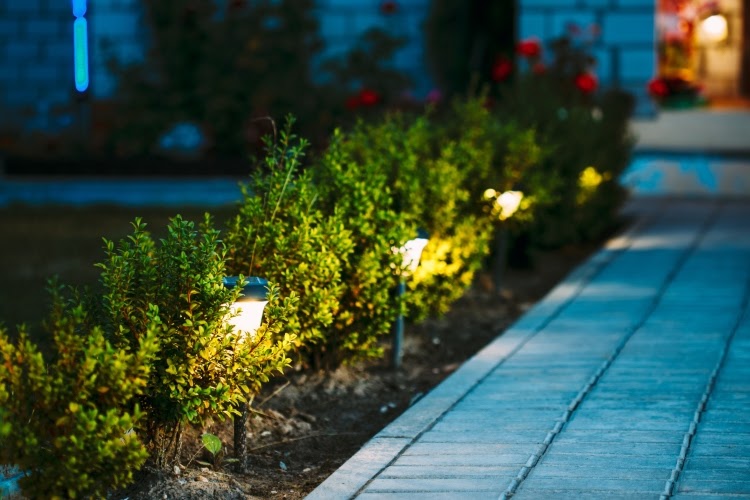
Friends and family don’t limit their visits to daytime hours. Ensure their safety after dark with solar stake lights, faux rock lights, or other pathway lighting style.
Not only will this lighting help prevent injury, but it can also:
- Showcase curb appeal no matter the time of day.
- Allow you to enjoy nighttime outdoor activities.
- Increase security.
Effort: Solar stake lighting options are super easy to set up, but before you install them, place them in a sunny area of your yard for a couple of days, so their batteries can charge.
Then, pick a location that receives full sun, and before inserting the stakes, you may need to wet the soil and break it up a bit.
Another style of light, such as a faux rock ball light on Amazon, takes even less effort once charged — just place it directly on the ground, and you’re done.
Time: The installation of stake lights shouldn’t take more than an hour or so. Setting out the faux flat stone-style lights should only take a few minutes.
Cost: Prices range from around $20 to more than $100, depending on style, amount, and color of lights.
3. Use pallets to create a bridge
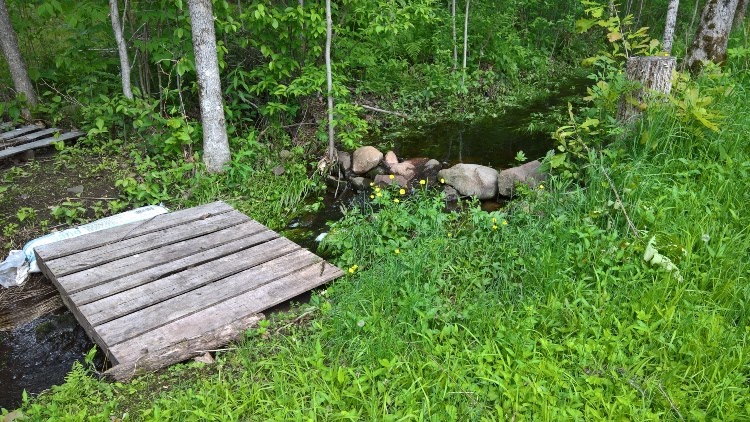
If repurposing is your jam, consider adding to your landscaping with a garden path made out of old pallets. They’re usually free to obtain, and they mesh well with any sort of rustic or country design.
Effort: Clear and level the spot where you want your pallet path to go, pack the soil, and set the whole pallets in place. Stabilize them by surrounding them with more dirt, as needed.
Watch how Donna from Funky Junk Interiors created her pallet garden walkway. Or, cut the pallets and use the individual boards to lay your pathway — this, of course, will take a little more effort and tools.
For even more support, opt to nail your pallet boards in the ground.
Time: Only a few minutes if using whole pallets; one afternoon if dismantling the pallets for the wooden boards.
Cost: You can collect wooden pallets for free at local stores.
4. Pave the way with pavers
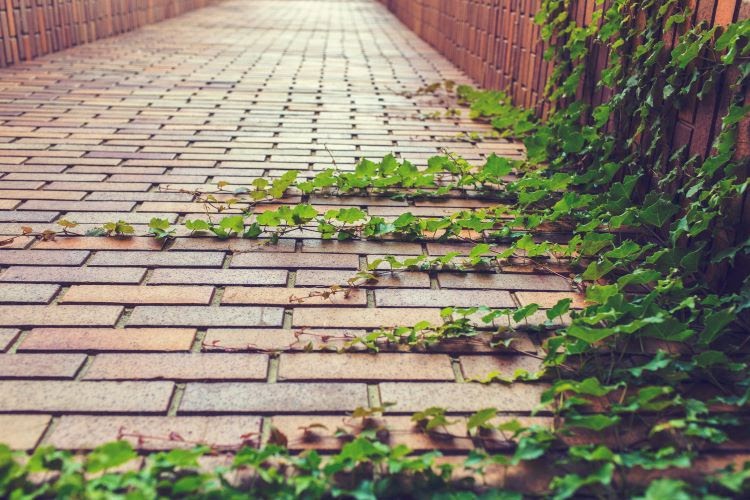
Depending on how much of a challenge you’re up for, you can go fully artistic or not with patio pavers. And since these pavers come in a variety of materials, you can build a stone walkway, concrete walkway, or brick walkway.
The easiest methods are jack-on-jack or running bond, in which you basically just fit the interlocking pavers together in a standard way — no intricate patterns to follow and not much cutting needed, if any.
For more of an artsy look, choose a paver pattern, such as pinwheel, majestic random, whorled, or herringbone.
To finish off the design, line your walkway with outdoor lighting, ornamental grasses, shrubs, and flowers.
Effort: Laying more involved patterns, such as herringbone, will be more of a feat than the simpler jack-on-jack arrangement. Regardless of the style you choose, though, you’ll need to adhere to the following layering steps:
- Layer 1: gravel paver base
- Layer 2: sand
- Layer 3: pavers
- Polymeric sand in joints to finish
Time: Over the course of one full day, you can complete this DIY project.
Cost: You can purchase interlocking concrete pavers for less than $1.
5. Build your own stairway
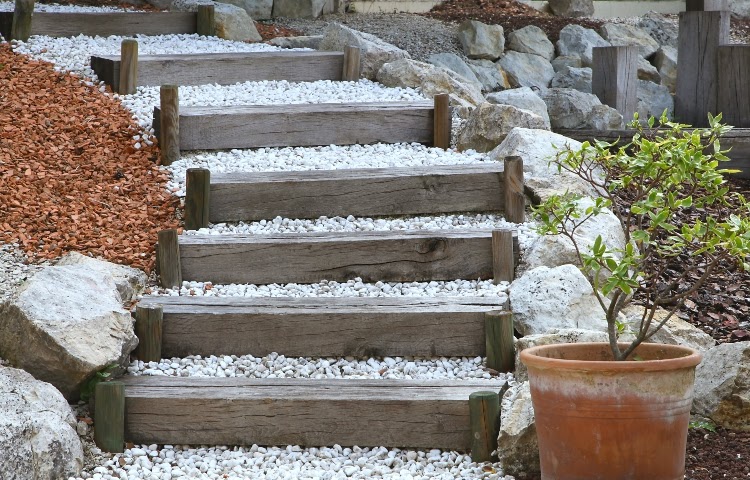
Another type of path, a stairway, can be built using landscape timbers and gravel. Perfect as a lead from your front yard into your garden, this DIY job requires pressure-treated wood posts, pea gravel, landscape fabric, and a rebar.
Effort: More for experienced DIYers, you’ll need to know how to excavate, grade the land area, cut timber to size, and build step frames to complete this project. Get a preview of what it takes in this video showing how to build outdoor wood steps.
Time: About half a day.
Cost: Depending on the amount of landscape timber and pea gravel you need, as well as if you need to purchase other materials and tools, your costs can fall between $50 and more than $200.
6. Go with gravel for your walkway
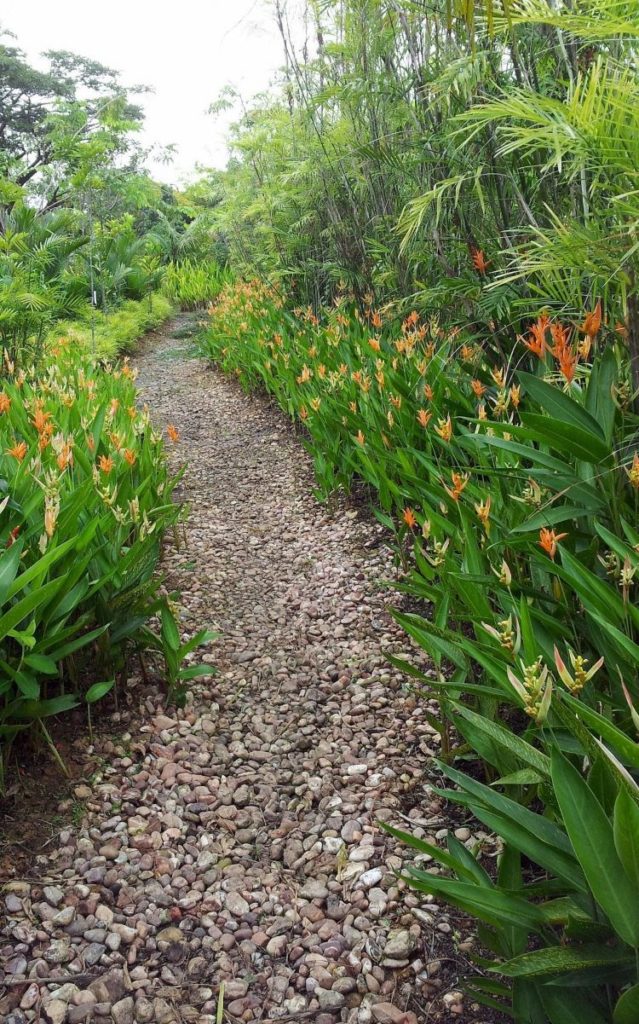
Easy enough for any DIY newbie to tackle, building a gravel walkway won’t break the bank, either.
Besides its economical cost and simple installation, gravel paths can also add a distinctive textural look to your garden design — its neutral palette setting off splashes of green, pink, red, purple, and other colors from the surrounding plants.
Effort: The most difficult parts of building this low-maintenance walkway? The digging up of sod and the hauling of the gravel.
Before all that, though, lay out your planned path using a hose or rope, line with plastic edging, and choose the type of gravel you’d like to use, such as pea gravel or river rock pebbles.
Then, dig up 4 inches of turf inside your defined area and tamp down the ground to level it. Once that’s done, place your gravel down, spreading it out evenly.
Time: You can complete this project over the course of one afternoon.
Cost: Plan to spend a little more than $100.
7. Cobblestone walkways add history, texture
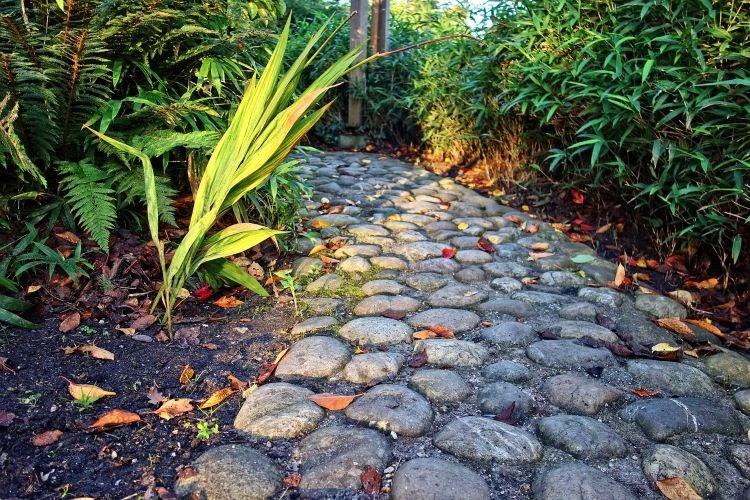
Perfect for homes in historic neighborhoods, or for those with a Mediterranean vibe, cobblestone brings a touch of elegance to your front walkway or garden path. Available in gray, red, tan, brown, and other colors, cobblestones can be laid straight or in mosaic patterns.
Effort: Because cobblestones aren’t the most even materials to use, this tutorial suggests sorting your cobblestones by similar size, first.
Then, once you’ve shaped your path with a rope or hose, dig up the turf and fill it with a base layer of gravel, followed by a layer of weed cloth and sand.
Lastly, lay the cobblestones of similar size and tamp them down with a mallet.
Time: About one to two days.
Cost: Cobblestone blocks can run you about $3 to $10 each.
8. Try bark mulch for an informal path
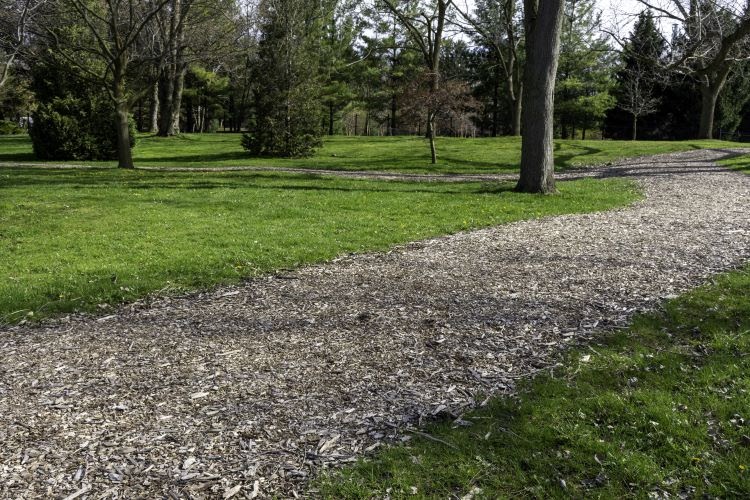
Another cost-effective, easy DIY walkway material is bark mulch. Ideal for an informal path leading from your backyard to a treehouse or other “outdoor room,” this low-maintenance option can complement nearby garden beds.
Effort: As with other paths, lay out your design with a rope or hose and line the sides with plastic edging to keep the mulch from moving from its set location.
All you’ll have to do to keep this walkway looking neat is to replace the mulch every few years, as it will decompose over time.
Time: Complete this in a weekend or less.
Cost: Mulch costs around $4 per bag, and for a standard 40 foot by 3 foot walkway, you’ll need approximately 20 bags.
9. Stroll under a canopy of trees

By far, one of the most enchanting walkway ideas is to create a Secret Garden-esque entrance tunnel. Plan your path to run underneath a canopy of shade trees, or erect a pergola adorned with vining plants.
Effort: Just about any type of walkway material will work for a shady area. Depending on the choice you make (pavers, stepping stones, gravel, mulch, etc.) will determine the level of difficulty.
Time: If you opt for an easy-to-make walkway, such as gravel, mulch, or even pavers, it shouldn’t take more than a weekend to complete.
Cost: Depending on the material and style of walkway you choose, prices can range anywhere from about $50 to $300.
10. Poured concrete adds permanence
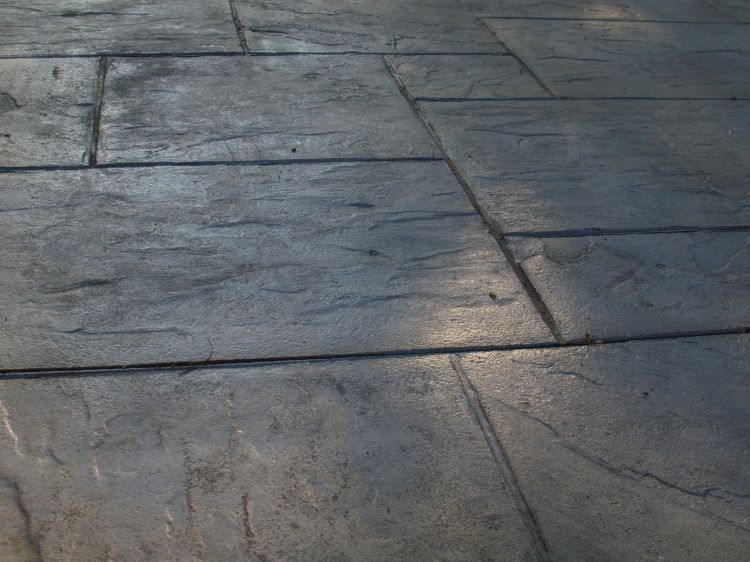
A literal way to “level up,” your backyard design, poured concrete allows you to build a walkway that’s higher up than if you opted for pavers. This comes in handy if you’d prefer keeping your new path flush with a raised patio or porch.
Effort: After designating a location for your concrete walkway and lining it with stakes, string, and wooden forms, dig up the turf.
Once the soil has been removed, you can pour the concrete into the preformed shape, flattening it with a 2×4 and smoothing the surface with a trowel and broom. Then, you can put your stamp on your design.
Time: A day or two.
Cost: This job can be done for about $300.
Walkway Ideas: Other Things to Know
What is the cheapest walkway material?
The cheapest, easiest way to build a walkway is to repurpose wooden pallets — they’re free and don’t require any actual building to take place.
Other than that, mulch and gravel are also economical walkway materials. The mulch option can run about $80, while the gravel can cost a little more than $100.
When to Call the Landscaping Pros
The more involved a project is, the better it is to consider bringing in a landscape professional for help.
While you may be able to handle creating a walkway made of mulch, gravel, or wooden pallets, pouring and stamping concrete or laying intricate patterns with bricks or stones may be out of the scope of your wheelhouse.
Turn over your design ideas to the experts, and let them lead you on a path toward a more beautiful landscape.


